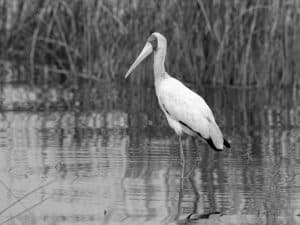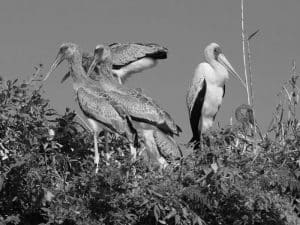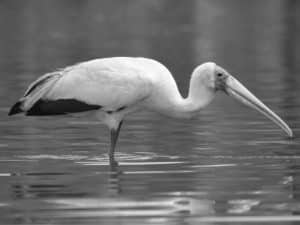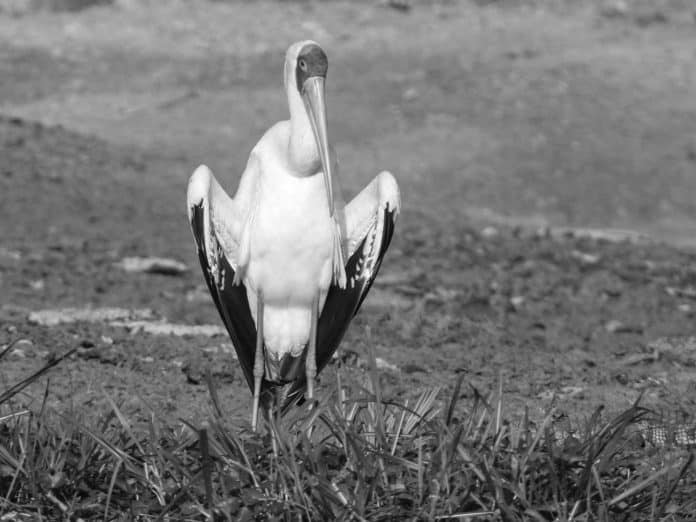Introduction to the Yellow-Billed Stork in Tanzania
Tanzania is a country known for its rich biodiversity, and one of its most captivating avian residents is the Yellow-Billed Stork. With its striking appearance and graceful movements, this majestic bird has captured the attention of nature enthusiasts and birdwatchers from around the world. In this article, we will delve into the world of the Yellow-Billed Stork in Tanzania, exploring its habitat, physical characteristics, behavior, and conservation status.
Habitat and Distribution of the Yellow-Billed Stork

The Yellow-Billed Stork is a wetland species, commonly found in the lakes, rivers, and marshes of Tanzania. These birds prefer shallow, freshwater habitats where they can easily forage for their preferred diet of fish, frogs, and insects. Some of the prime locations to spot the Yellow-Billed Stork include Lake Manyara, Serengeti National Park, and the Rufiji River.
In addition to Tanzania, the Yellow-Billed Stork also inhabits various other African countries, including Kenya, Zambia, and South Africa. However, Tanzania is known to host a significant population of these magnificent birds, making it a hotspot for birdwatchers and wildlife photographers.
Physical Characteristics and Behavior of the Yellow-Billed Stork
The Yellow-Billed Stork is a large wading bird, measuring approximately 95 to 105 centimeters in height, with a wingspan of about 150 to 160 centimeters. As the name suggests, it is characterized by its distinctive yellow bill, which is long and slightly curved, allowing it to efficiently catch prey in the water.
These storks have predominantly white plumage, with black flight feathers and a striking red patch around their eyes. Their long legs are black, providing stability while wading through the water. With their graceful and deliberate movements, the Yellow-Billed Storks are a sight to behold.
In terms of behavior, these birds are primarily diurnal, meaning they are active during the day. They can often be seen foraging in groups, using their bills to probe the water for small fish and amphibians. The Yellow-Billed Stork is also known for its elaborate courtship displays, which involve intricate dances and bill-clattering sounds.
Conservation Status of the Yellow-Billed Stork in Tanzania
Despite their captivating presence, the Yellow-Billed Stork in Tanzania is facing numerous conservation challenges. Habitat loss, caused by the degradation of wetlands and deforestation, poses a significant threat to their population. Additionally, pollution and the use of agrochemicals in agricultural practices can have detrimental effects on their food sources.
As a result of these threats, the Yellow-Billed Stork is classified as a species of “Least Concern” on the IUCN Red List. However, continuous monitoring and conservation efforts are essential to ensure the long-term survival of these magnificent birds.
The Role of the Yellow-Billed Stork in the Ecosystem

The Yellow-Billed Stork plays a vital role in maintaining the balance of the ecosystem in Tanzania. As opportunistic feeders, they consume a variety of aquatic organisms, including fish, frogs, and insects. By controlling the population of these prey species, the storks help to regulate the overall health of the wetland ecosystem.
Furthermore, the Yellow-Billed Storks are known to nest and roost in colonies, often alongside other bird species. These colonies create important breeding and nesting grounds for various avian species, contributing to the overall biodiversity of the region.
Where to Spot the Yellow-Billed Stork in Tanzania
If you’re planning a visit to Tanzania and want to catch a glimpse of the Yellow-Billed Stork, there are several prime locations where you’re likely to spot these magnificent birds. Lake Manyara National Park, located in the northern part of Tanzania, is renowned for its diverse birdlife and is home to a significant population of Yellow-Billed Storks.
Serengeti National Park, famous for its wildebeest migration, also provides excellent opportunities for birdwatching. The park’s wetland areas, such as the Seronera River Valley, attract a variety of waterbirds, including the Yellow-Billed Stork.
For a truly unique experience, consider visiting the Rufiji River in the Selous Game Reserve. This vast river system is teeming with wildlife, and you’ll have the chance to observe Yellow-Billed Storks in their natural habitat as they forage along the riverbanks.
Tips for Photographing the Yellow-Billed Stork
Capturing the essence of the Yellow-Billed Stork through photography can be a rewarding experience. Here are a few tips to help you get the best shots:
- Be patient: Observing and photographing wildlife requires patience. Spend time studying the storks’ behavior and anticipate their movements to capture the perfect moment.
- Use a telephoto lens: The Yellow-Billed Stork’s preferred habitats may require some distance between you and the subject. A telephoto lens will allow you to get close-up shots without disturbing the birds.
- Pay attention to lighting: Consider the lighting conditions when photographing the storks. Soft, early morning or late afternoon light can enhance the beauty of their plumage and create a warm atmosphere in your photographs.
Interesting Facts about the Yellow-Billed Stork

- The Yellow-Billed Stork is known for its unique feeding technique called “bill-vibrating.” They rapidly shake their bills in the water to attract prey hiding in the mud or vegetation.
- These storks are highly social birds and often nest and roost in large colonies, sometimes consisting of thousands of individuals.
- Although primarily silent birds, Yellow-Billed Storks produce a variety of vocalizations, including bill-clattering sounds during courtship displays.
Conservation Efforts and Organizations Supporting the Yellow-Billed Stork in Tanzania
Several organizations and initiatives are dedicated to the conservation of the Yellow-Billed Stork in Tanzania. The Wildlife Conservation Society (WCS) works towards protecting the country’s wetlands and raising awareness about the importance of these habitats for the storks and other species.
The Tanzanian government has also implemented measures to safeguard the wetland ecosystems, including the establishment of protected areas and the enforcement of regulations to mitigate habitat destruction.
Conclusion: Celebrating the Enigmatic Beauty of the Yellow-Billed Stork in Tanzania
The Yellow-Billed Stork in Tanzania is a true symbol of the country’s remarkable biodiversity. Its striking appearance, graceful movements, and important ecological role make it a must-see for any nature enthusiast or bird lover visiting the region. By understanding and appreciating these magnificent birds, we can contribute to their conservation and ensure that future generations can continue to marvel at their enigmatic beauty.

































